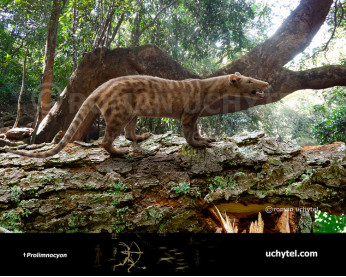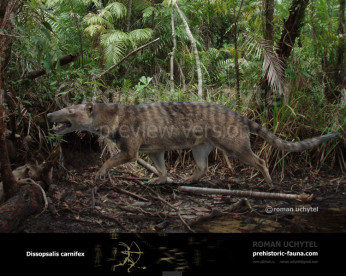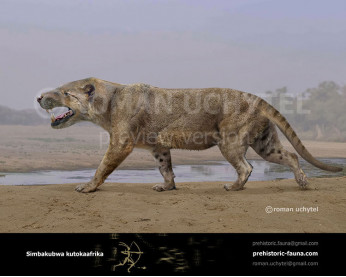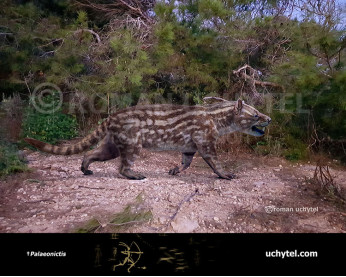Sinopa
538538
Sinopa (†Sinopa (Leidy, 1871))
Class: Mammalia
Order: †Hyaenodonta
Family: †Sinopidae
Time period: during the early to middle Eocene (North America and Asia, 50.3 to 46.2 million years ago)
Size: Up to 1,2 meters long. 35 cm tall at the shoulder. Weight estimated at up to 1,5-14 kg.
Type species: †Sinopa rapax Leidy, 1871
Sinopa was a small genus of hyaenodontid mammals. The type specimen was found in the Bridger formation in Uinta County, Wyoming.
While hyaenodontidan intercontinental migration in the earliest Eocene (55 Ma) is fairly well known, no evidence has been found to indicate hyaenodontidan intercontinental dispersals during the time span between the end of the earliest Eocene and the arrival of Hyaenodon in North America at the latest middle Eocene.
The first Sinopa species, S. jilinia sp. nov., from outside of North America is described. It comes from the Huadian Formation, locality Gonglangtou, Jilin Province, north-east China. The new species represents the northernmost and one of the latest and most complete Asian Prototomus-like hyaenodontidans known. It also represents one of the youngest specimens of Sinopa, because the age of the Huadian Formation is correlated to the later Uintan and only one doubtful citation of North American Sinopa younger than the early Uintan exists. With S. jilina, Sinopa is the first hyaenodontidan genus known to be present on two continents during the time interval between the earliest Eocene (c. 55.0 Ma) and latest middle Eocene (40 Ma). Its occurrence in the Huadian Formation supports the idea of a faunal exchange between North America and Asia in the early middle Eocene. The Chinese Sinopa thus is the first hyaenodontidan genus known to be present on two continents during this time interval.
Sinopa was also said to be present in Africa represented by Sinopa ethiopica Andrews, 1906, but this taxon belongs to a yet unnamed genus (Holroyd 1994) that is likely related to Quasiapterodon (Lewis and Morlo 2010).
Оплата
У Вас є кілька зручних способів купівлі зображення: кредитна чи дебетова картка Visa, Mastercard, Maestro; PayPal або банківський переказ
Sinopa (†Sinopa (Leidy, 1871))
Class: Mammalia
Order: †Hyaenodonta
Family: †Sinopidae
Time period: during the early to middle Eocene (North America and Asia, 50.3 to 46.2 million years ago)
Size: Up to 1,2 meters long. 35 cm tall at the shoulder. Weight estimated at up to 1,5-14 kg.
Type species: †Sinopa rapax Leidy, 1871
Sinopa was a small genus of hyaenodontid mammals. The type specimen was found in the Bridger formation in Uinta County, Wyoming.
While hyaenodontidan intercontinental migration in the earliest Eocene (55 Ma) is fairly well known, no evidence has been found to indicate hyaenodontidan intercontinental dispersals during the time span between the end of the earliest Eocene and the arrival of Hyaenodon in North America at the latest middle Eocene.
The first Sinopa species, S. jilinia sp. nov., from outside of North America is described. It comes from the Huadian Formation, locality Gonglangtou, Jilin Province, north-east China. The new species represents the northernmost and one of the latest and most complete Asian Prototomus-like hyaenodontidans known. It also represents one of the youngest specimens of Sinopa, because the age of the Huadian Formation is correlated to the later Uintan and only one doubtful citation of North American Sinopa younger than the early Uintan exists. With S. jilina, Sinopa is the first hyaenodontidan genus known to be present on two continents during the time interval between the earliest Eocene (c. 55.0 Ma) and latest middle Eocene (40 Ma). Its occurrence in the Huadian Formation supports the idea of a faunal exchange between North America and Asia in the early middle Eocene. The Chinese Sinopa thus is the first hyaenodontidan genus known to be present on two continents during this time interval.
Sinopa was also said to be present in Africa represented by Sinopa ethiopica Andrews, 1906, but this taxon belongs to a yet unnamed genus (Holroyd 1994) that is likely related to Quasiapterodon (Lewis and Morlo 2010).

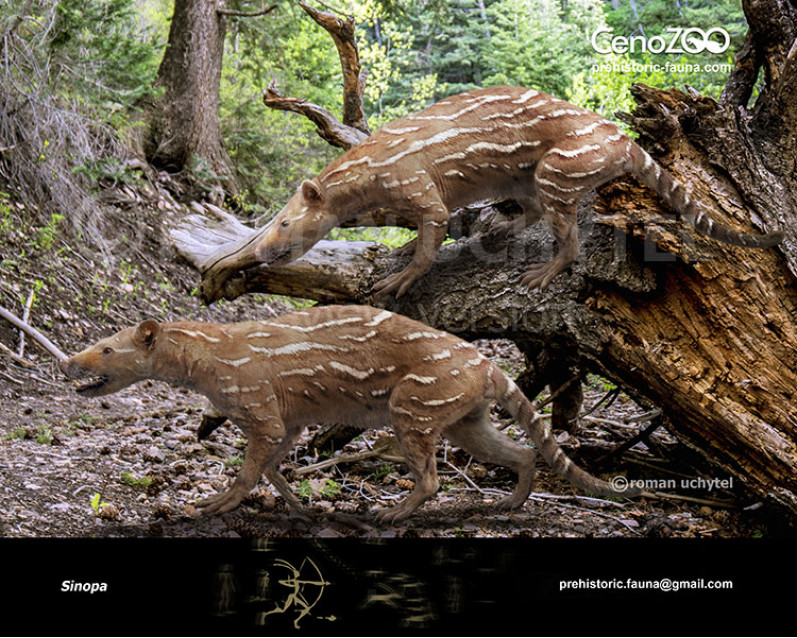
-797x638.jpg)
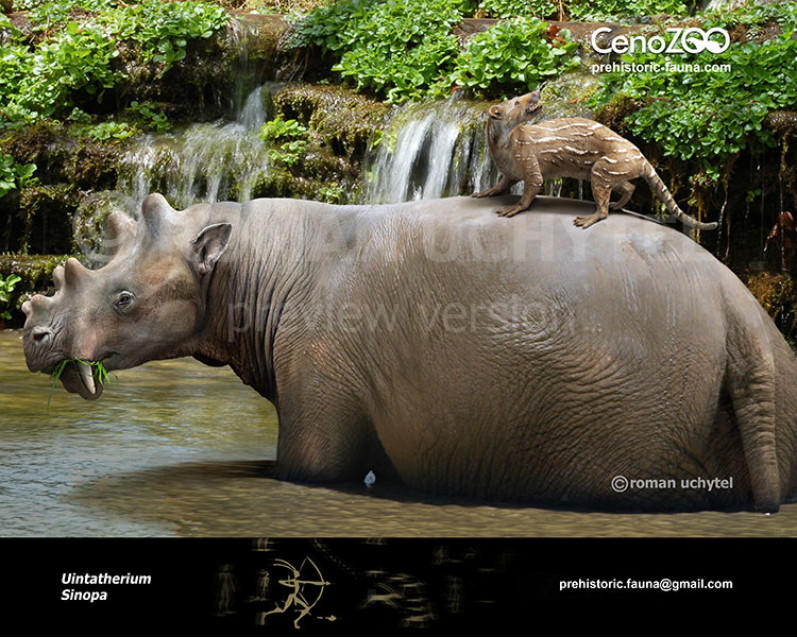

-70x56.jpg)

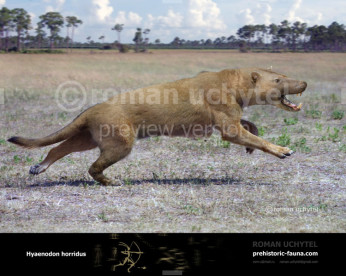
-346x277.jpg)
